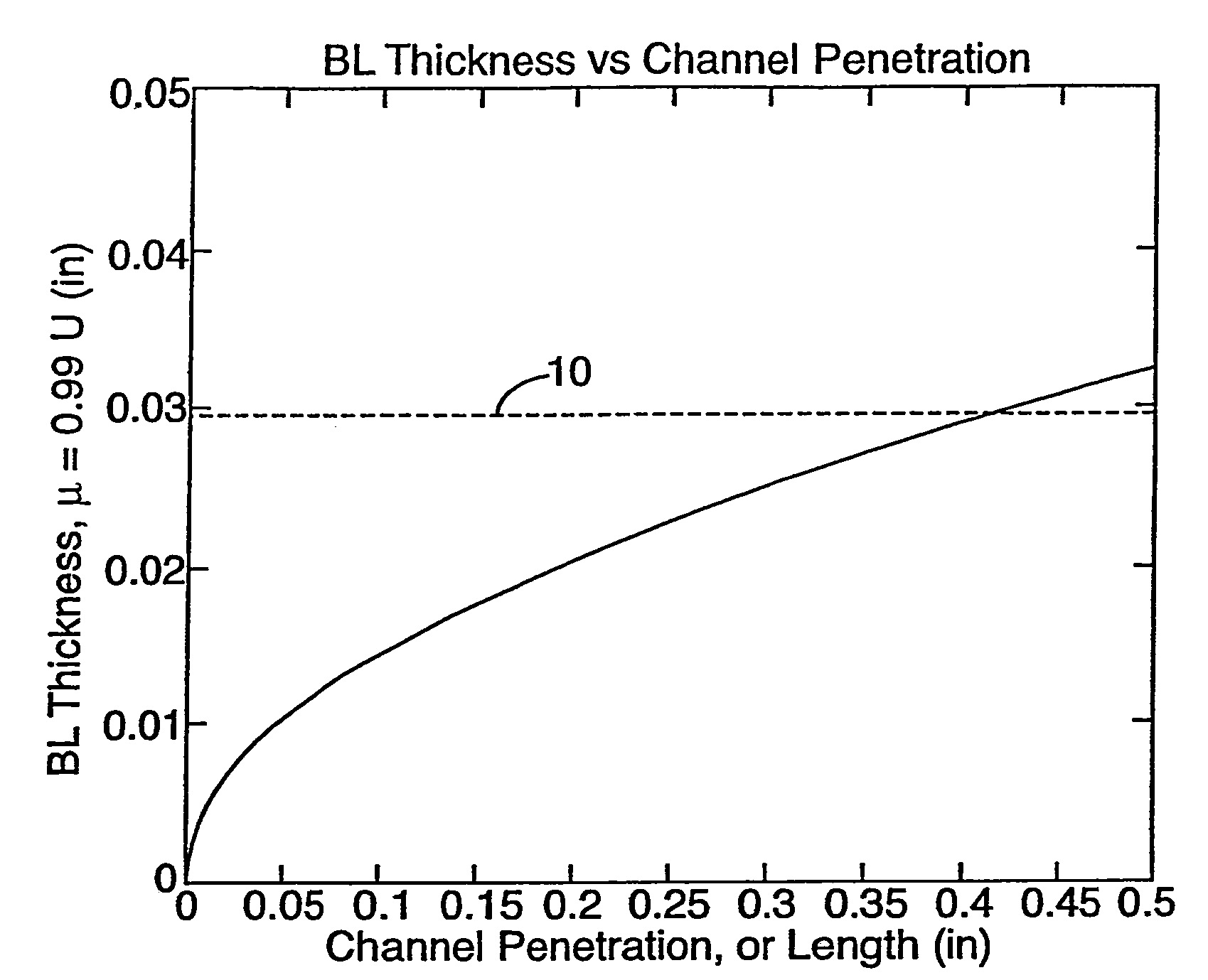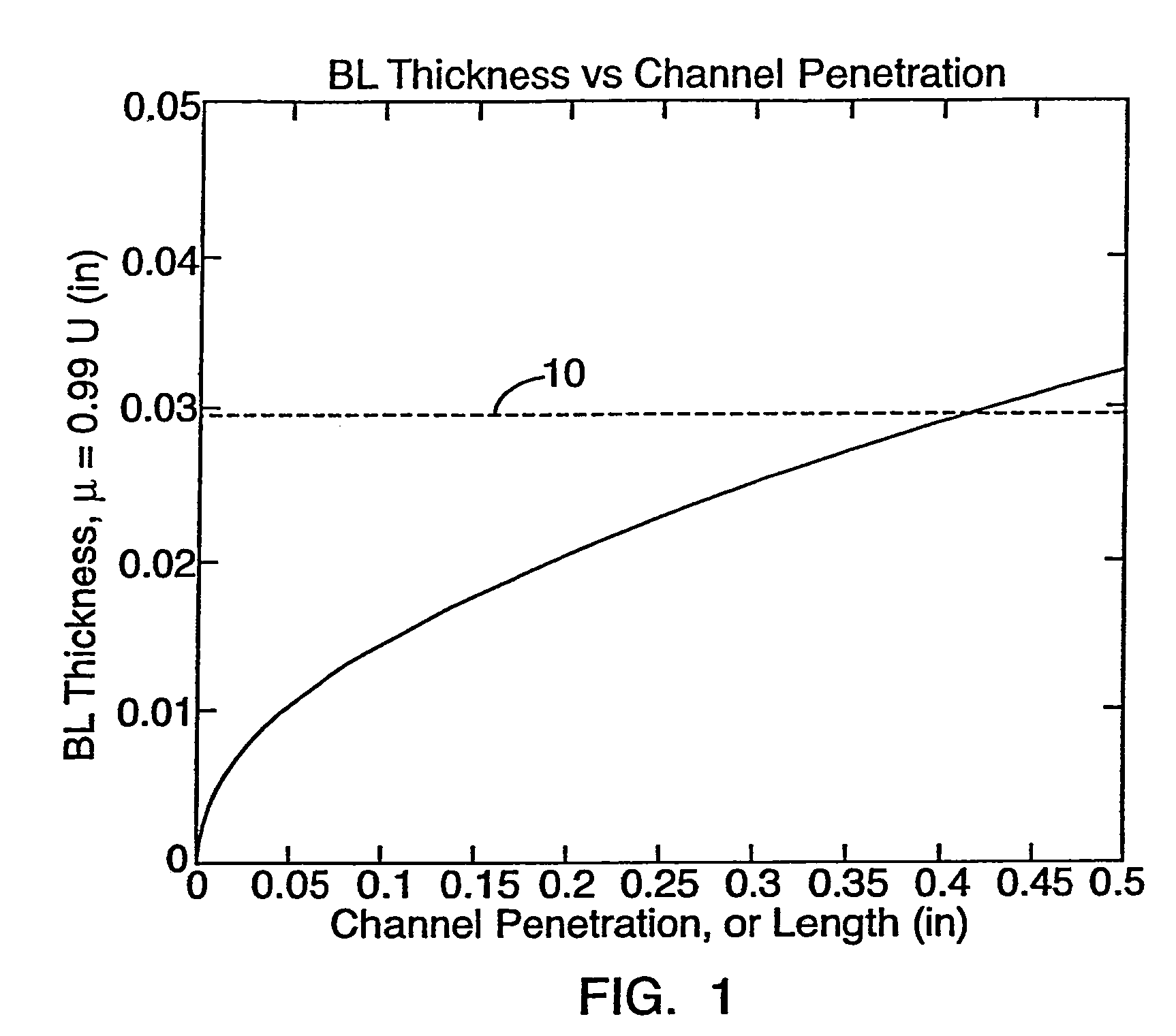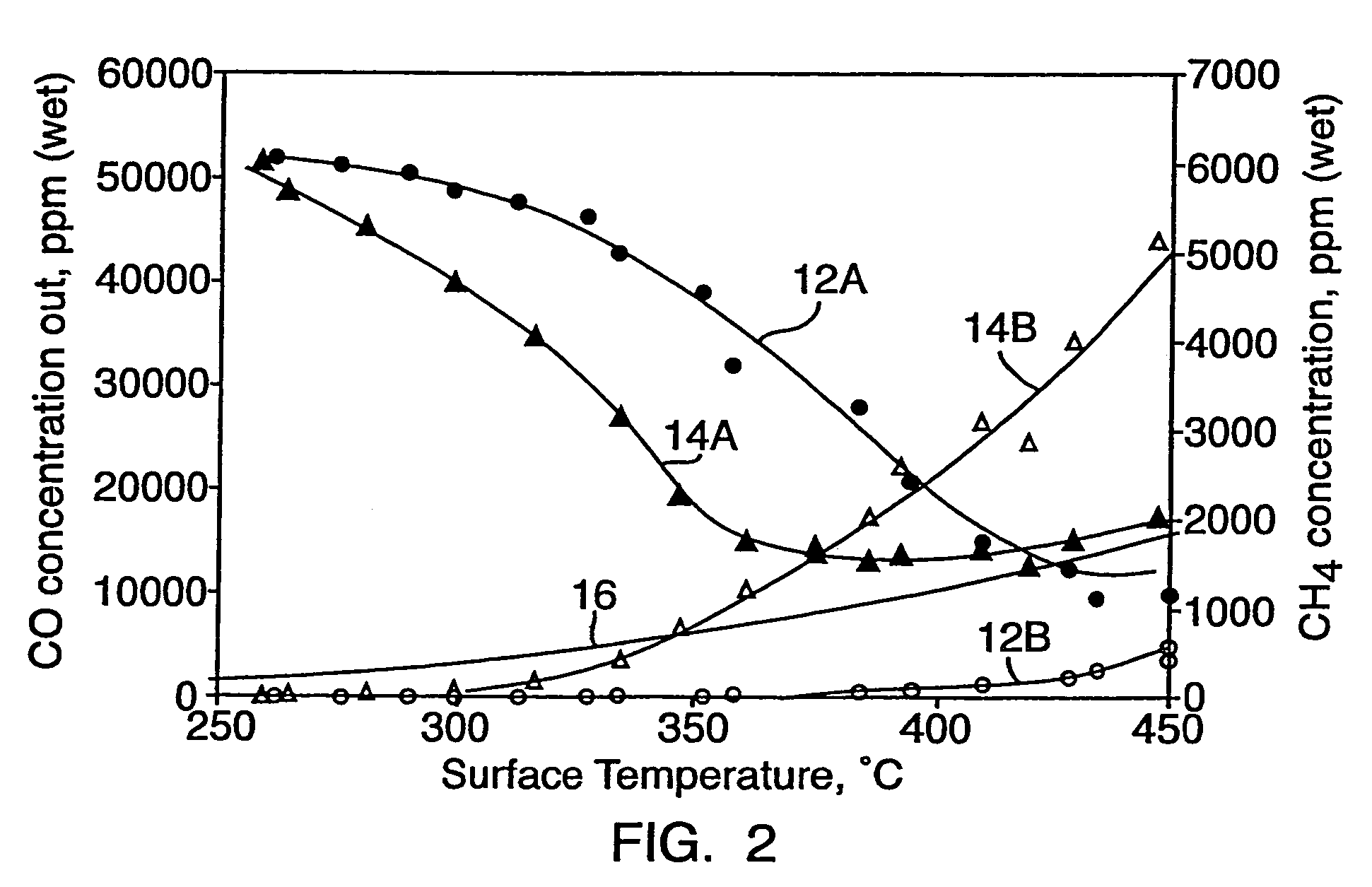Method for improved selectivity
- Summary
- Abstract
- Description
- Claims
- Application Information
AI Technical Summary
Benefits of technology
Problems solved by technology
Method used
Image
Examples
Embodiment Construction
[0037]As generally shown in FIG. 1, a fluid flowing over a surface creates a boundary layer having a momentum thickness, i.e. BL Thickness. As the channel penetration distance increases, the thickness of the boundary layer tends to increase to an asymptotic point 10 that is the maximum thickness of the boundary layer. In the case of the present invention wherein a gas is used and of which this graph is representative, the asymptotic point occurs at a boundary layer thickness of about 0.03 inches that corresponds to a channel penetration of about 0.45 inches. A gas flowing in a channel having a channel length shorter than 0.45 inches, or a channel having a length longer than 0.45 inches incorporating properly positioned flow disruption features, will therefore never develop a boundary layer having the maximum thickness. On the other hand, fluids flowing in channels having channel lengths longer than 0.45 inches without appropriately positioned flow disruption features will develop a ...
PUM
 Login to View More
Login to View More Abstract
Description
Claims
Application Information
 Login to View More
Login to View More - R&D
- Intellectual Property
- Life Sciences
- Materials
- Tech Scout
- Unparalleled Data Quality
- Higher Quality Content
- 60% Fewer Hallucinations
Browse by: Latest US Patents, China's latest patents, Technical Efficacy Thesaurus, Application Domain, Technology Topic, Popular Technical Reports.
© 2025 PatSnap. All rights reserved.Legal|Privacy policy|Modern Slavery Act Transparency Statement|Sitemap|About US| Contact US: help@patsnap.com



